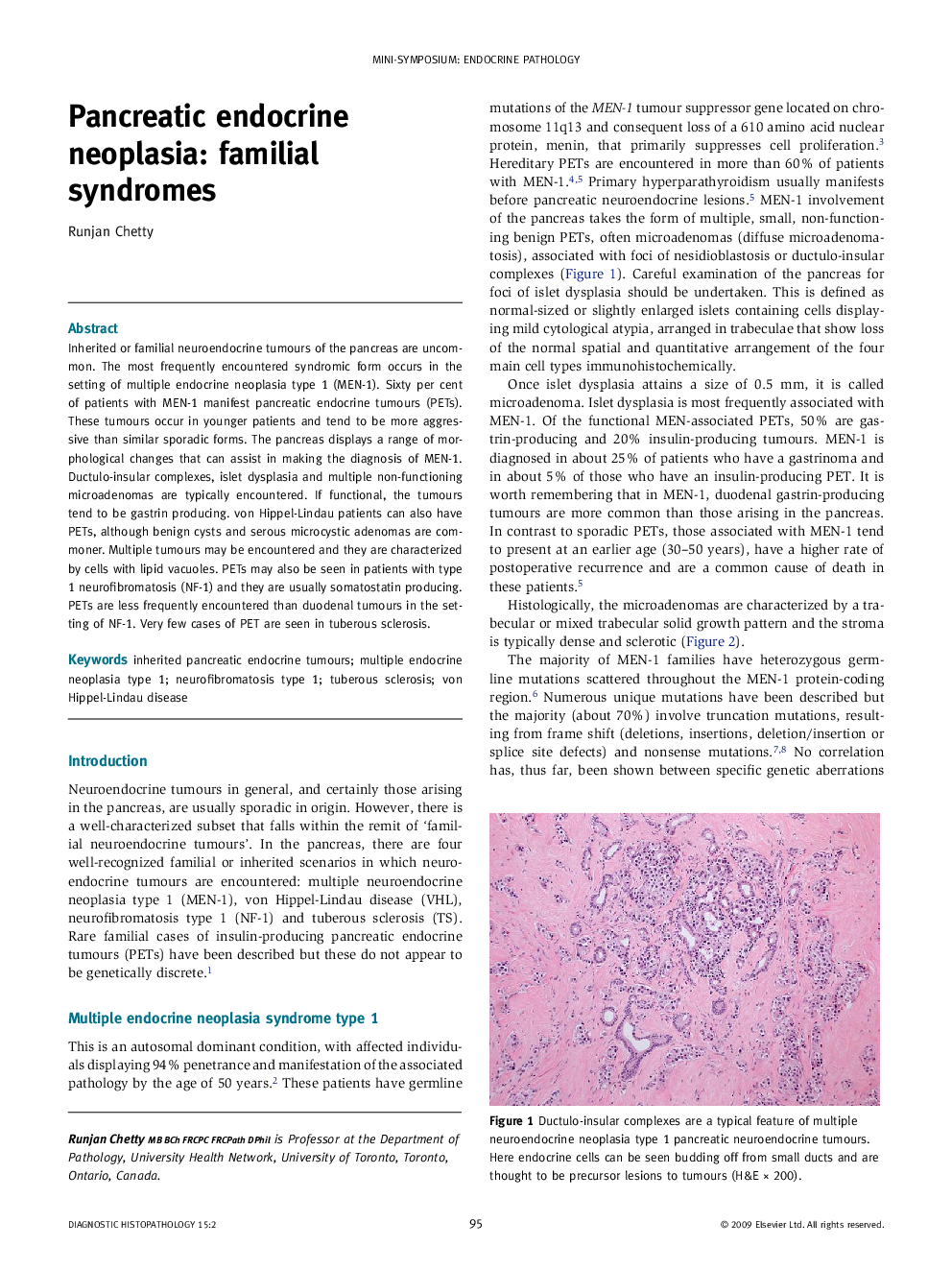| Article ID | Journal | Published Year | Pages | File Type |
|---|---|---|---|---|
| 4131402 | Diagnostic Histopathology | 2009 | 4 Pages |
Inherited or familial neuroendocrine tumours of the pancreas are uncommon. The most frequently encountered syndromic form occurs in the setting of multiple endocrine neoplasia type 1 (MEN-1). Sixty per cent of patients with MEN-1 manifest pancreatic endocrine tumours (PETs). These tumours occur in younger patients and tend to be more aggressive than similar sporadic forms. The pancreas displays a range of morphological changes that can assist in making the diagnosis of MEN-1. Ductulo-insular complexes, islet dysplasia and multiple non-functioning microadenomas are typically encountered. If functional, the tumours tend to be gastrin producing. von Hippel-Lindau patients can also have PETs, although benign cysts and serous microcystic adenomas are commoner. Multiple tumours may be encountered and they are characterized by cells with lipid vacuoles. PETs may also be seen in patients with type 1 neurofibromatosis (NF-1) and they are usually somatostatin producing. PETs are less frequently encountered than duodenal tumours in the setting of NF-1. Very few cases of PET are seen in tuberous sclerosis.
